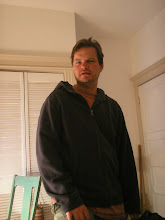

This was a three-day weekend to celebrate Freedom Day-the anniversary of Nelson Mendela’s release. I decided to head out to Oudtshoorn, about four hours away into the desert interior, which you may now by it’s other name: The Ostrich Capital of the World. When I arrived, the guy at the hostel convinced me to rent a mountain bike and do a 54 kilometer tour. The next morning I started at a high mountain pass, then dropped down multiple dirt road switchbacks for about 10 km.
I stopped in at the Cango Caves, which claim the largest stalagmite formations in the world. The tour was pretty challenging physically, often involving climbing up and down tight passages. The crawling was a little worrisome, mostly because my sunglasses and camera were in still in my pockets. Why I would bring sunglasses into a cave is any one’s guess.
Then the highlight: the ostrich farm. Inspired by avatar, I got the chance to ride the big bird. To mount, they blindfold it in a pen, so it won’t bite. Then you get on top, grabbing it by the wings. The ostrich has a hump for storing water, like a camel, so it’s comfortable enough to sit on. Then they open the pen, and it’s a bit like rodeo. I’d estimate I lasted eight seconds- not bad. The key is to not get kicked while


